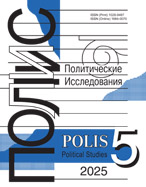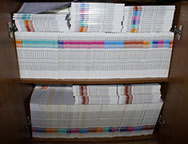The Space of the Ideological Discourse of Post-Soviet Buryatia
DOI: 10.17976/jpps/2005.02.05
Amogolonova D.D., Skrynnikova T.D. The Space of the Ideological Discourse of Post-Soviet Buryatia . – Polis. Political Studies. 2005. No. 2. https://doi.org/10.17976/jpps/2005.02.05
The article contains analysis of the spatial-temporal components of the ideological discourse of contemporary Buryatia. The authors demonstrate that the spatial and temporal ideologemes of the Buryat political discourse operate with the whole complex of ethnic characteristics (territory, language, religion). At that, the spatial and the temporal models are not separated from one another, but coexist in the unity of the postulated estimations: “within the limits — out of the limits”, “formerly — nowadays”. Speculatively affirming and legitimating the current confines of the ethnos, the spatial ideologemes are directly related with the history of the Mongols and with the civilizing impact of Buddhism, which, taken together, allow the bounds of the Buryats’ cultural affiliation to be expanded as to embrace the Central Asian region as a whole. At the same time, according to the authors’ conclusion, substantial implication of the discourse is not reduced to ethnic features and peculiarities proper
See also:
Shvyrkov A.I.,
Theory, Discourse and Political Reality. – Polis. Political Studies. 2016. No5
Shevchenko A.Yu.,
Discourse-Analysis of Political Media-Texts. – Polis. Political Studies. 2002. No6
Trakhtenberg A.D.,
Discourse-Analysis of Mass Communication and Paradoxes of Leftist Consciousness. – Polis. Political Studies. 2006. No4
Chikharev I.A.,
The Great Mediterranean as a Multi-Dimensional Object of Political Research. – Polis. Political Studies. 2021. No3
Kapustin B.G.,
Theses on political philosophy. – Polis. Political Studies. 2010. No2





.jpg)






 print
print
.jpg)
.jpg)